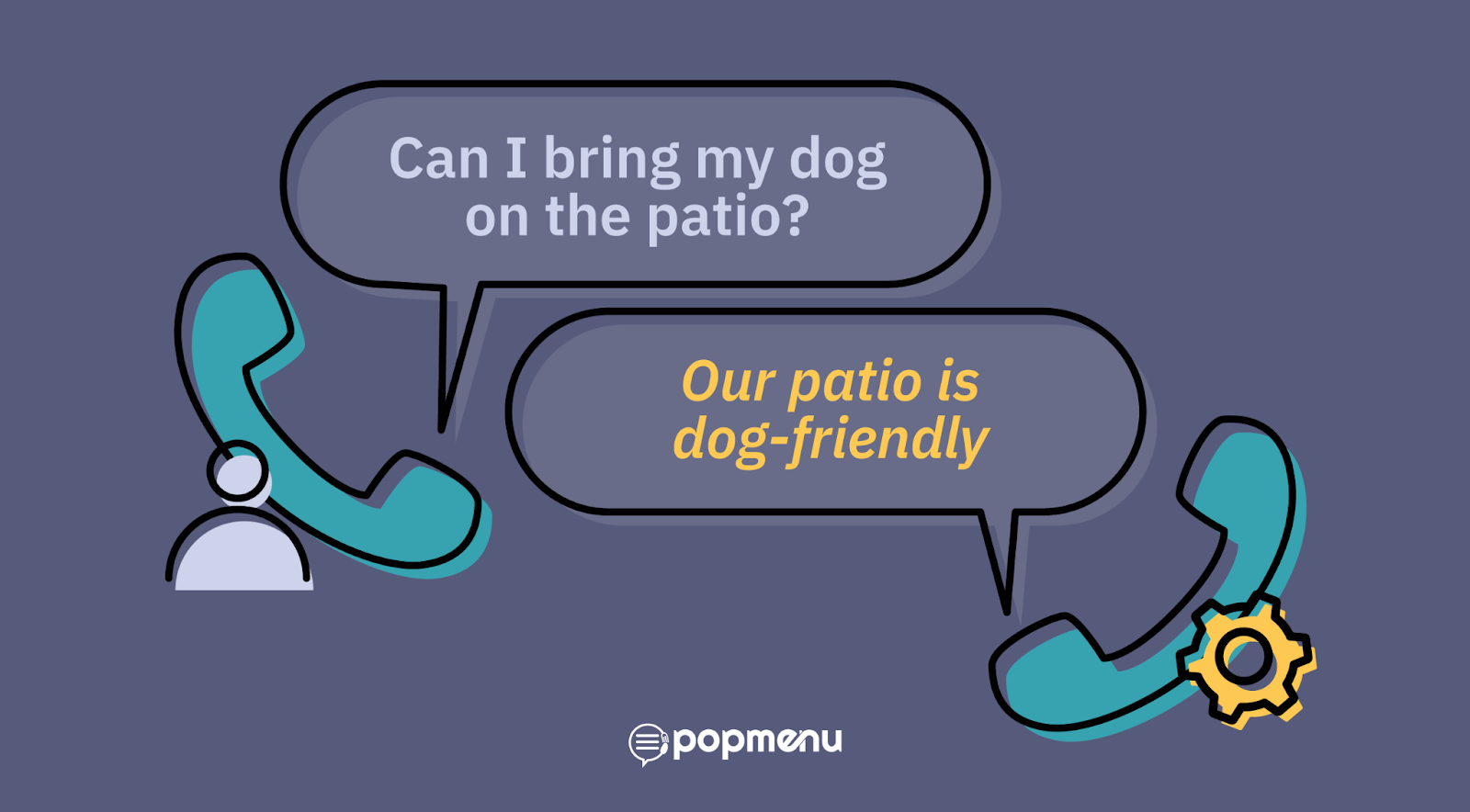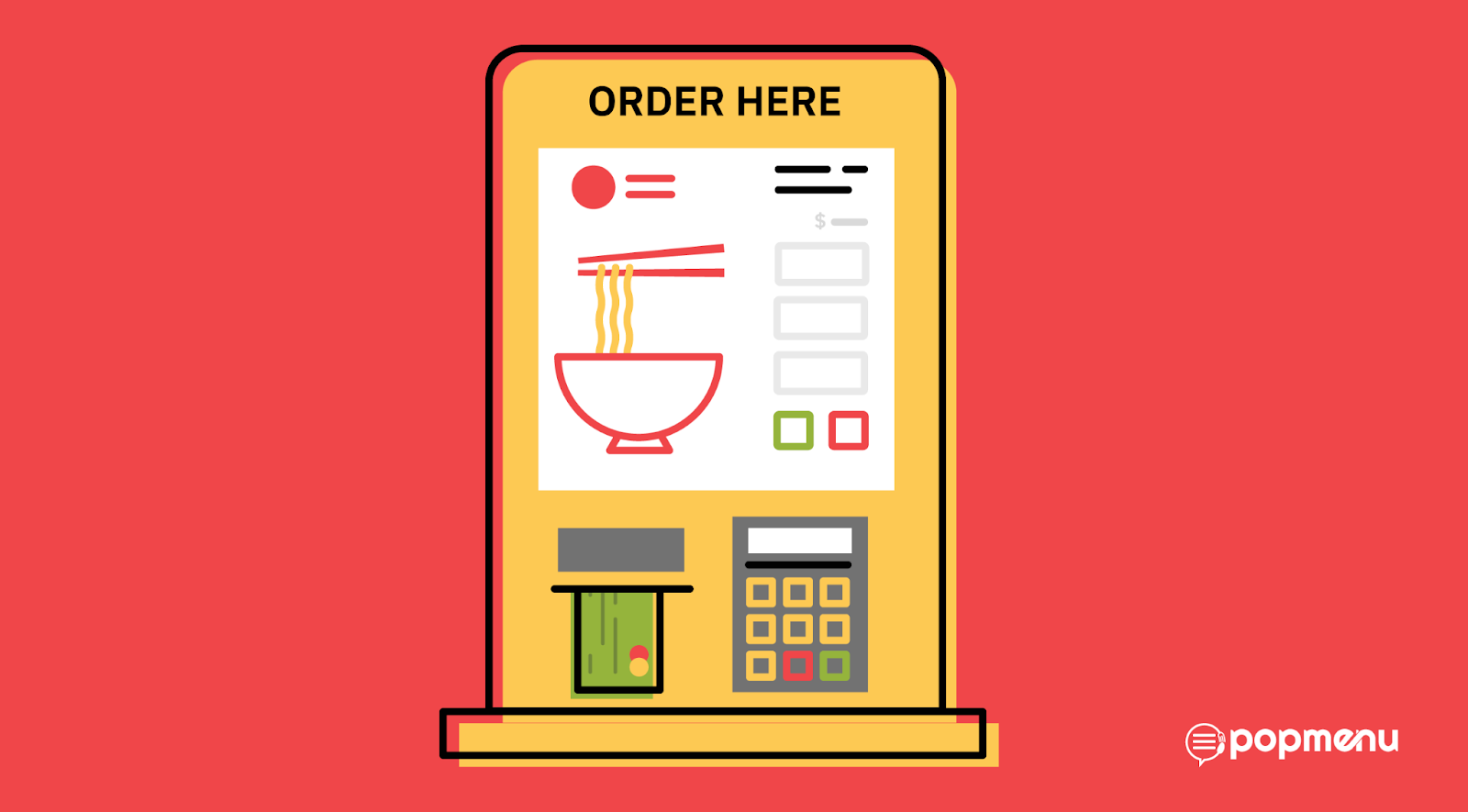
AI in restaurants: 9 ways artificial intelligence is shaping the food industry

Explore this content with AI
ChatGPT | Perplexity | Claude | Google AI | Grok
When people think of artificial intelligence (AI) in restaurants, their minds always seem to jump right to kitchens staffed by robots who are able to cook so well, they can replace their human counterparts.
While that's not an impossible scenario anymore (there are actual restaurants in the world that have robots doing at least some of the cooking), it's not the most common way AI is changing the restaurant industry. You might be surprised to learn about some of the ways even less-than-tech-savvy restaurant owners can implement AI to streamline their operations and improve their guests' experiences.
AI may be a little bit of a buzzword, but this technology is not out of reach for the average restaurateur. Read on to learn about AI in restaurants—and how you can use artificial intelligence in small ways to make big changes.
What is artificial intelligence, really?
AI is so much more than robot kitchens. It's also not what pop culture might lead you to believe—we're not going to eventually be outsmarted by restaurant technology and end up serving it, instead of the other way around.

Artificial intelligence is pretty much what it sounds like: Intelligence that didn't happen naturally. Instead, it's created by a human to allow a computer to mimic human behavior. AI can receive information from the world around it and react to it, but it cannot store that information and use it to grow and become more complex over time. Siri and Alexa are good examples of AI—they can answer queries from their users, but they don't get to know their users over time, learning their wants and anticipating their needs.
This brings us to another topic that often comes up when we talk about AI in restaurants: Machine learning.
Machine learning takes AI to the next level. This kind of technology allows computers to not only take in information, but also to use complex algorithms to learn from it, so they can make predictions about events or human behavior based on historical patterns. Machine learning is used by platforms like Netflix and Spotify that get to know your likes over time and provide you with new content you might enjoy.
Is AI in restaurants really necessary?
As technology of all kinds becomes a more integral part of running a restaurant, AI is emerging as an area of restaurant technology with virtually limitless potential.

Here are just a few of the benefits of using AI in an independent restaurant:
- Cut costs: AI technology can be used to automate a lot of simple and rote tasks (like taking reservations or entering orders into the POS). This means less money spent on staffing your restaurant, and lower costs overall.
- Reduce errors: Human error accounts for a lot of things that can go wrong in a restaurant. For example, a server in a busy dining room might mishear a guest's order, resulting in the guest receiving the wrong dish. When guests order via AI, there's less opportunity for human error.
- Customize orders: AI gives more control to guests during the ordering process. This allows them to customize their orders (and their overall experience) to fit their needs.
- Improve guest service: By embracing AI's ability to perform simple and rote tasks in your restaurant, you can free up employees to do what they're best at (and what AI can't just yet): Focus on your guests and provide them with the best possible experience. For all the talk about robots being poised to take over restaurant kitchens, there's one thing they definitely can't do yet: Mimic the human touch that can make a restaurant experience so special.
- Find new customers: AI technology can supercharge your restaurant's marketing efforts, allowing you to identify what kinds of customers might love your food, reach out to them, and encourage them to pay you a visit. AI can also help with retaining guests—remarketing efforts can encourage them to make a repeat visit after coming to your restaurant.
These benefits showcase just how powerful AI can be for independent restaurants, especially in the midst of staffing shortages, inflation, and rapidly evolving customer expectations. It's important to note that AI tools are not designed to outright replace your workforce, but rather they are powerful ways to make their day-to-day work a lot easier. Think of it as a way to retain your best staff by removing some of the more mundane tasks they would otherwise have to manage.
9 ways AI in restaurants is becoming more common
In recent years, the restaurant industry has been changing rapidly, particularly when it comes to technology.
AI has been one area where technology has created changes for restaurants that look straight out of a sci-fi novel. For example, take Flippy, the burger-flipping robot at a CaliBurger franchise in Pasadena. Or the delivery drone used by Domino's to drop off a pizza order in New Zealand. These big, quick-service restaurant chains have enough capital to invest in AI technologies that come with high up-front costs, but this is the exception for the restaurant industry, not the rule.
While advances in technology have made AI more accessible than ever before, robots that do the food preparation and cooking or deliver orders to guests are still out of reach for the vast majority of restaurants. In the foodservice industry, AI is becoming more common, but in smaller ways, often behind the scenes.
AI in the front of house

AI phone answering
Missed phone calls can have a disastrous effect on a restaurant's business. A recent survey conducted by Popmenu found that a staggering 83% of customers will move on and dine at another restaurant if they try to call and get voicemail more than once.
That's why many restaurants are adopting technology that helps them answer the phone more consistently. AI phone answering technology listens to questions that come in from guests and pulls information from your website and Google Business Profile to provide accurate responses to every customer. For example, if a guest asks, "Can I bring my dog on the patio", AI Answering will pick out keywords like "dog" and "patio" and respond, "Our Patio is dog-friendly". Restaurants can even write their own responses to ensure callers always receive a high-quality, branded experience. Custom responses also serve as a great way to upsell opportunities and promote events!
This tool has already made a huge impact on restaurants, just ask Poppy's Pizza & Grill, who saved their staff from having to answer upwards of 40 calls a day! As a result Poppy's no longer has to spend time writing scripts and training staff on best practices for answering the phone and customers can always get a prompt response to their questions.
AI Answering can even help a restaurant capture more business by sending guests a link to place an online order or book a reservation. Locals Pub, another restaurant using the tool, saw their online sales increase by 132% in their first 90 days with automated phone answering.
Voice ordering
27% of all online people now use voice search, and nearly 40 percent prefer voice search over their keyboards when searching for nearby restaurants. As voice assistants have become more popular—Amazon Alexa, Google Home, and Siri, just to name a few—the tasks they can help users accomplish have become more complex and far-ranging.
Guests have been using virtual assistants to search for restaurants for a while now. But a new technology that's gaining popularity is voice ordering—where guests can use their smart devices to place restaurant orders on the go or while multitasking.
But this technology has even more applications than just ordering on guests' personal devices. Voice ordering could be implemented at self-service kiosks or in drive-thrus, allowing guests to place orders conversationally.
Self-serve options
Self-serve technology goes hand-in-hand with voice ordering. This encompasses all the different ways guests are being given the power to control and customize their own dining experience through self-service.
Customizing menu items while ordering from kiosks, splitting the check and paying from tableside tablets, or even their own devices are just a few examples of this. More and more guests are embracing self-service technology in a variety of ways—and from all kinds of restaurants, from fast food to sit-down dining.

Kiosks that personalize customer experiences
While ordering kiosks have become fairly common in a variety of restaurants, there are some eateries that are taking that experience a step further. Take KFC, for example, which is experimenting with kiosks with facial recognition technology that can recognize repeat visitors and tailor their experience based on their past orders and preferences.
Although facial recognition might not be accessible for all restaurants, there are many ways you can use AI to help personalize the dining experience for your guests. Online ordering and digital marketing are two places where restaurants are more commonly collecting guest data, and then using that data to provide personalized service, from dish recommendations to targeted marketing.
AI in the back of house
Integrated inventory and purchasing
One area of restaurant operations where AI can have a major impact is by integrating inventory and purchasing systems with your point of sale (POS) system. AI-enabled software can track historical inventory and purchasing data, looking for trends and making real-time recommendations for how many ingredients and supplies to buy.
Not only does this ensure your restaurant has enough inventory on hand to avoid having to 86 a popular dish, but it can help cut down on food waste by tailoring purchasing to only meet inventory needs, without buying excess that your restaurant won't be able to use before it expires.
Smarter staffing and scheduling
Staffing your restaurant and scheduling employees can be one of the trickiest parts of restaurant management. That's why it's an area where AI technology is becoming more and more popular.
Using AI-enabled software, restaurants can track staffing and sales data to determine any trends or patterns in busy times (and less busy times). Then, they can staff the restaurant appropriately for the traffic and sales that are expected during each shift.
Data-based insights and predictions
In 2019, McDonald's started using predictive AI technologies and forecasting orders made in its drive-thrus. By analyzing historical data about what customers ordered and when, McDonald's stores were able to anticipate rushes and even predict what dish would be most popular during a given time of day. By anticipating orders, the stores using this technology were able to reduce wait times by 30 seconds on average—quite a feat when you consider that drive-thru ordering experiences typically only last a few minutes.
This kind of predictive technology can be used by restaurants in so many ways: To manage inventory, staffing, menu pricing, and more.

Automated marketing and remarketing
One place where most restaurants can implement AI today is in their digital marketing plans. There are many tools available now that use automation to send out marketing emails, social media posts, and targeted ads to the right people at the right times to maximize views, click-through rates, and more.
AI marketing can also be used to retarget recent visitors to your restaurant, encouraging them to become repeat guests. It can help identify promotions that might help you upsell guests. All you need is the right automated marketing tools (which are included in every Popmenu package).
AI content creation
AI isn't just a great tool for sending out well timed marketing messages, it can also help restaurants create engaging content that's unique to their business. Many owners have taken advantage of AI marketing content creation that uses information from their restaurants website (like upcoming events, popular dishes, and more) to instantly generate a calendar of emails, social posts, and text messages. This means they can easily stay in touch with guests without dedicating massive amounts of time to writing content themselves.
AI in restaurants is here to stay
While AI might seem like an intimidating subject to many less tech-savvy restaurateurs, the bottom line is that it's earned its place in the restaurant industry's future. Looking for the best way to navigate new technology? Popmenu can help! Our platform offers solutions like AI Answering and AI Marketing that are helping thousands of restaurants drive more business for their restaurant while saving time. Schedule a free demo with one of our experts to learn how Popmenu can help your restaurant.





.jpeg)






